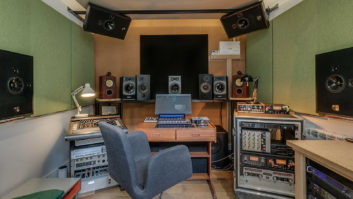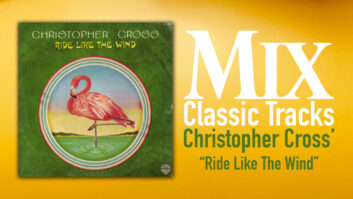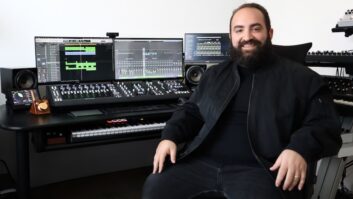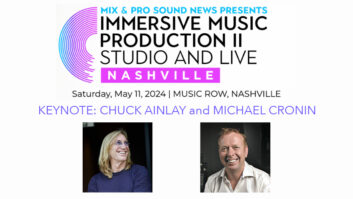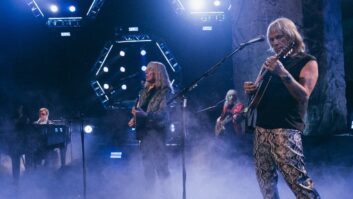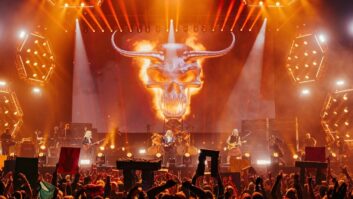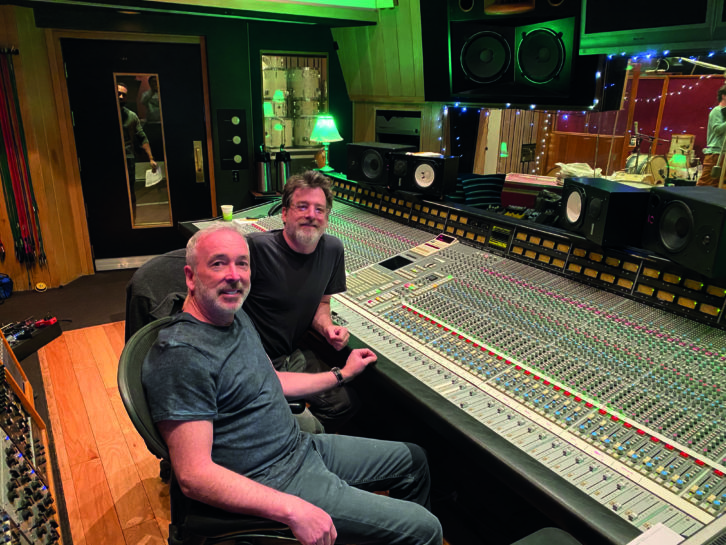
Dolby Atmos seems to have re-awakened Michael Marquart’s musical soul.
“It’s inspiring, especially because [I’ve been] doing music for so long with no gratification and no help and seeing the death of the music industry,” bemoans Marquart, whose musical past includes being drummer for A Flock of Seagulls in 1989 and a founding member of A Bad Think. “It’s hard to find something to keep going on, and when I heard the potential of all this stuff, I knew I wanted to be on the front end.”
So, coming off his eighth release, 2019’s The Savior, which garnered a Grammy nomination for Best Immersive Audio Album, in large part due to Bob Clearmountain’s surround sound mix, Marquart decided that he wanted to record a game-changing album at the beginning of 2020. Lifelike, the new record for A Bad Think, was released on April 2, 2021, accompanied by a 20-minute documentary on the making of.
“I’m starting to think Atmos is really coming down the road in a big way,” Marquart says. “It is coming, and you can’t stop a freight train.”
As he prepared for Lifelike, Marquart spoke with recording engineer and mixer Dave Way, who was also feeling revitalized by Atmos. Marquart was clear that he wanted everything to be as good as it could be from the ground up: “Recorded in the best studios in the world, with the best musicians, and I will keep writing music until I have 30 songs and we will pick the best 13 to have it be the best that it could be,” Marquart says, adding that one of his artistic objectives was an album that made people smile.
Marquart followed his regular process, where he wrote a song on keyboard or guitar, came up with an arrangement, the melody and lyrics, and then started by recording acoustic guitar. Then he recorded a few synth parts and finished vocals (with a possible drum reference), all at his home studio on his Neve 8014 with 16 channels, with a 1073 mic pre on the side.
He recorded the vocals with a Telefunken 250. He says that he typically works by himself at this point, doing about 15 passes, then building comps.
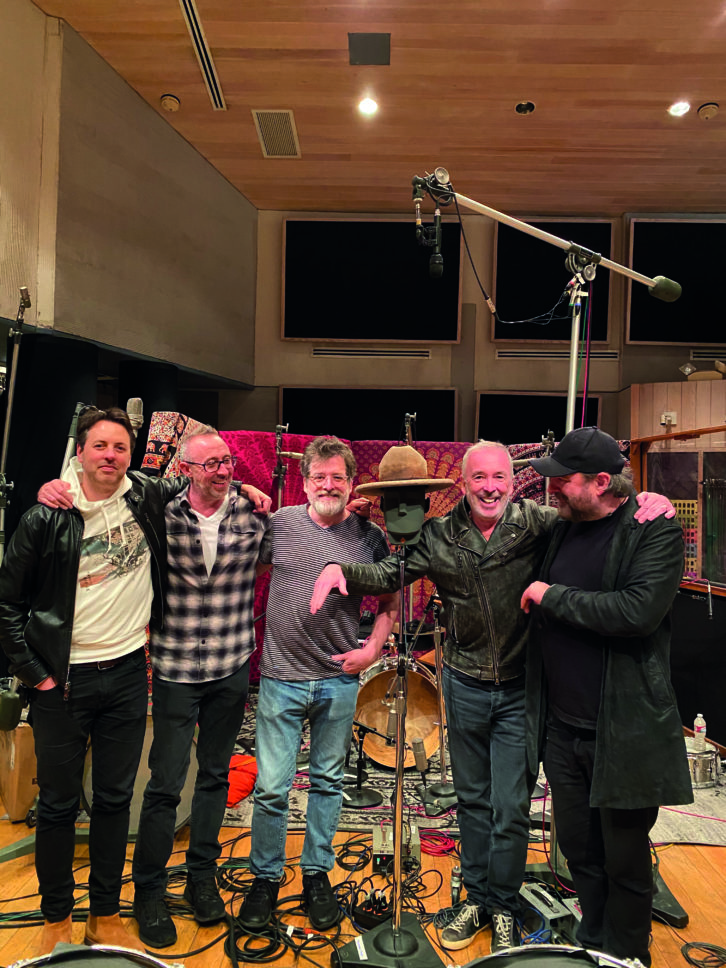
From Home to Henson
With basics in hand, the team went into Henson Studios with drummer Jeremy Stacy and bassist Sean Hurley to cut live tracks to Marquart’s guitar, keys and vocals; drummer Victor Indrizzo played double drums on three tracks.
Explaining the recording process, Way says that you don’t necessarily have to record “in Dolby Atmos,” although they did. “It’s really in the mix,” he says. “It’s really where you pan things. Now instead of having two speakers or even in 5.1 where you have five speakers, now you have way more than that. You have speakers directly on your side and speakers directly above you. And it’s not a set number of speakers.
“We had a lot of these ambisonic mics, including Sennheiser Ambeo, which is like one microphone with multiple capsules in it and it records sounds in 360,” he adds. “We also had a Calrec Soundfield microphone, and a Neumann Head KU 100 Binaural microphone [aka “Fritz”]. I ended up using Fritz on a lot of the overdubs. I think the binaural works pretty well in a Dolby Atmos situation. For the most part, binaural is most effective when played back in headphones because basically it’s putting microphones where your ears are with the dummy head to simulate the way your brain actually perceives sound, which is around your head. When you put microphones where your ears are, it’s very much capturing the sound the way we hear it.”
After Henson, the team went to Way’s Waystation studio to record overdubs with guitarists Fernando Perdomo and Kirk Hellie.
Way’s studio has an Avid S4, KRK V Series monitors (in a 7.1.4 configuration), along with ProAc, Tannoy, Yamaha and Genelec speakers; a 2020 Mac Pro running Pro Tools and Mac Mini for the Dolby Atmos renderer; plenty of vintage outboard mic pre’s, compressors, EQs (Neve, API, Inward Connections, Universal Audio, Focusrite, Telefunken, Ampex, EMT, Motown, Undertone…); a variety of vintage and modern mics; Focusrite interfaces with Dante; and an R1 monitor controller.
Keyboardist Phil Shenale recorded his parts at his own studio.
Mix This! In Dolby Atmos
While Bob Clearmountain, who had mixed The Savior a year prior, was working on initial mixes for Lifelike, he didn’t know that there was also going to be a Dolby Atmos deliverable. He was initially asked for stereo and surround. His studio, Mix This!, is outfitted with a 72-input SSL 4000G, with two Pro Tools rigs—for multitrack and printing—and all Apogee conversion. “Apogee is as good as it gets,” he says. The SSL had to be modified for surround.
“It was originally designed for stereo and quad,” he explains. “The quad bus is kind of useless when you’re talking about 5.1, so I figured out a way to use the multitrack routing buses to get full panning between speakers. It’s like a little matrix. You can pan between the odd and even buses on the routing, so I took advantage of that to be able to pan between front and back and all that.”
The other challenge for Clearmountain was that the stereo compressor on the SSL is a big part of his sound, so he had to figure out how to modify the console to duplicate that on a surround mix.
“It’s the same mix,” Clearmountain says. “It’s basically a stereo mix, but while I’m doing that, I’m assigning output channels for the surround. There’s a small fader on the SSL that you can put between the big fader—the fader I’m mixing with, the main VCA/motorized fader—between that and the routing bus. I put all those right at 0, and then I can make little adjustments while I listen to the surround so I can trim each one, the difference between the stereo mix and the surround mix. So all the rides, the EQs and processing are the same, but I can adjust relative levels between the two mixes.”
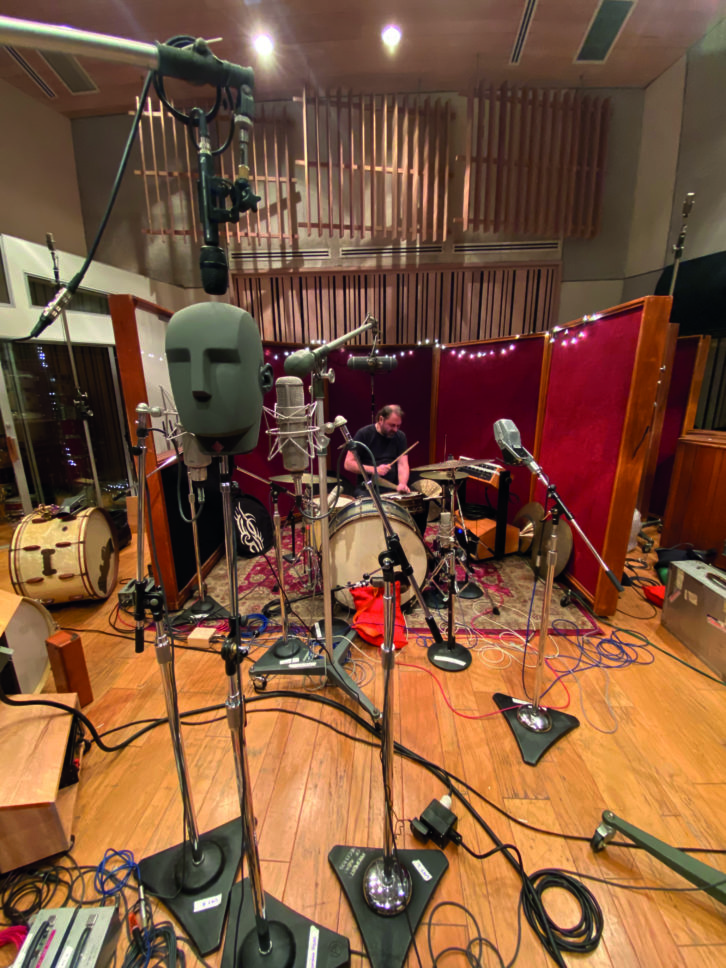
For the tracks with two drummers, Clearmountain says, “I would try to keep them on the same channel, but sometimes they were playing two or three parts at the same time and I’d always check to see if anything was flamming or if everything was perfectly in time, or if sometimes I should just use one of the bass drums instead of both—what would work best in the mix.”
The choices on outboard gear were similar to what he uses on most of his projects: Pultec EQP-1A3 for guitars and piano, along with a the UREI 1178 (vocals, drums and sometimes guitar), UREI LA-3A (vocals), an Empirical Labs Distressor (acoustic and electric guitars), SSL stereo compressor (piano), and the Neve 33609 (bass, sometimes electric guitar). “On Michael’s voice I think I used an LA-3A,” he recalls. “He has more of a mellow voice. He has an amazing voice.
“The thing about Michael is he and Dave add so many great elements to the material,” he continues. “I have such a great time with his music. There’s already this sense of depth just in the multitrack, and I just do whatever I can to enhance that.”
Mixing Another Way
Ultimately three mixes were done—the regular stereo mixes, the surround sound mixes that can be accessed on immersiveaudioalbum.com and Blu-ray, and a Dolby Atmos version. Clearmountain’s two mixes were done simultaneously, he says.
When it came time for his mix, producer/engineer Dave Way says that they wanted to do a completely new version, independent of Clearmountain. He set up his room for Dolby Atmos, but found that the newness of the format, at least to him, made it difficult to navigate.
“I can’t go listen to it in my car,” Way says. “I can’t even listen on another pair of speakers. I can only listen on one set. And until I got a Dolby Atmos receiver, which happened a little bit later, I couldn’t even reference other people’s Dolby Atmos mixes. It was like mixing on a desert island. I started the mixes here on my own until I got about five or six of them; then we brought them over to Capitol where Steve Genewick put the mixes up in the Atmos room.”
Way says that they sounded “pretty good,” but after about three or four songs he could hear that his side speakers were a little too prominent and the front speakers were slightly too far away. He retuned his room with the new placement in mind, got a Dolby Atmos receiver, and started making adjustments on the mixes.
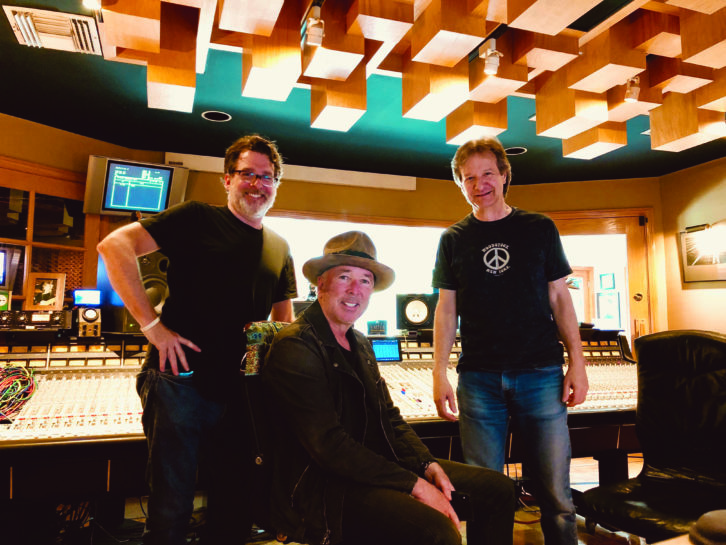
The Artist’s Perspective
For Marquart, the whole process of going through an immersive production was definitely a far-different-than-usual experience.
“You normally think about left and right, in stereo,” he says. “Now you think about the emotion that can be created by immersing the listener. We’re still at the front end of this stuff; it’s like the Wild West.”
Way describes it as the wild west, as well, but one gets the feeling that they are both energized by that reference.
“When I first started to mix, I didn’t realize how much longer it would take because you have so many more options as far as where you want to put something,” Way explains. “When you’re mixing something in stereo, you either can put something on the right or the left or in the middle. But now I have so many choices that I sit there for a while. It’s so creative and so inspiring. There are no rules. You’re in the middle of the room and the music is all around you. We’re still in the early stages of this format, and people are still playing around with it. I’m excited by it.”
“When I first heard this at the NAMM show at the PMC booth, I thought, ‘This is going to change everything,’ because I have been doing this my whole life and it made me excited about listening to music,” Marquart says. “When you think about how when you were young and how a song could change your life and how that could all be powered up again with a new technology, it’s so exciting.”
